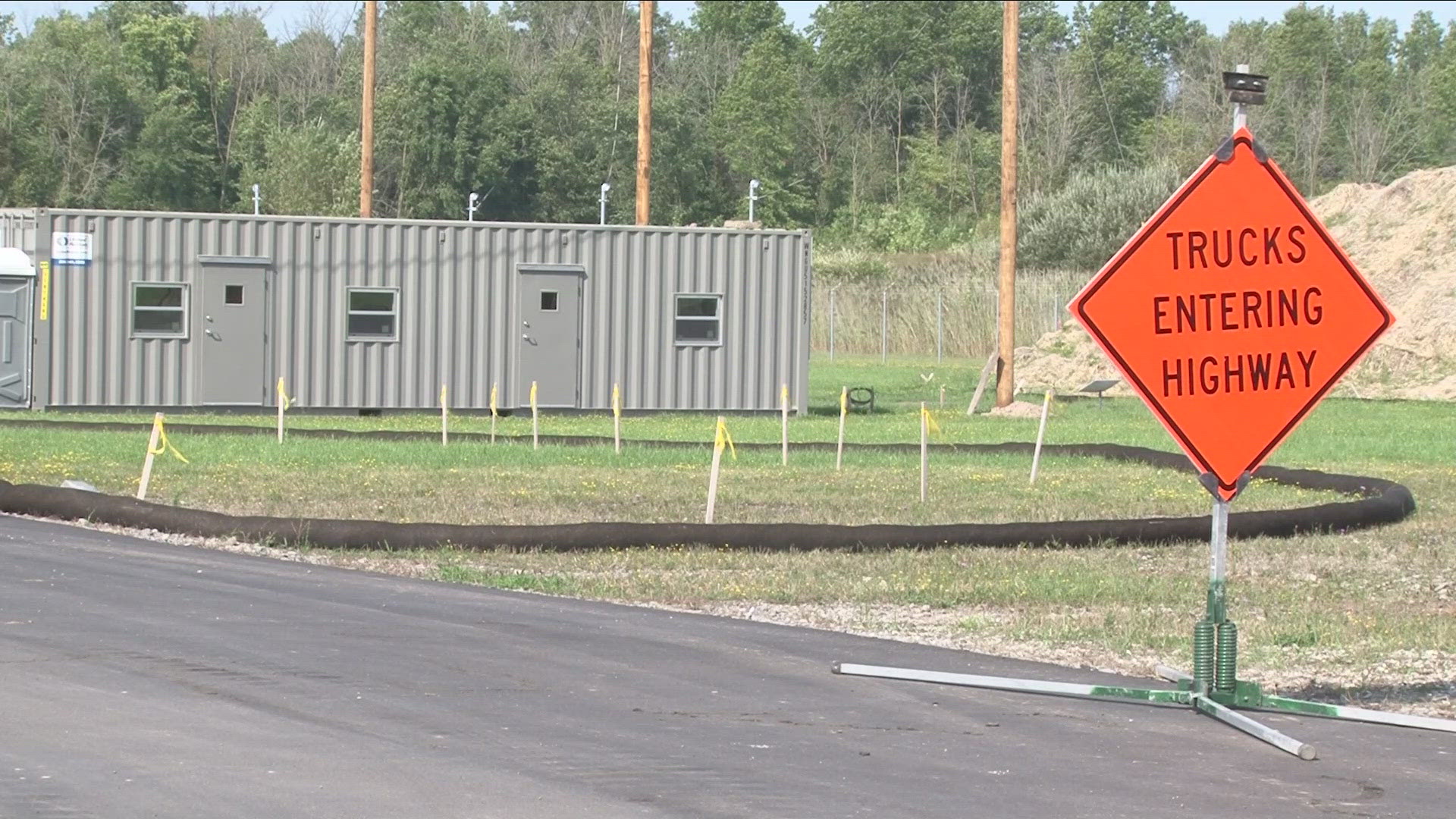LEWISTON, N.Y. — After decades of studies, community meetings, and public outcry, Manhattan Project-era radioactive material is finally being removed from a storage site in Lewiston.
"It's great to start moving dirt here," said Jeffrey Hall.
Hall is the Chief of the Niagara Falls Storage Site Integrated Technical Office for the U.S. Army Corps of Engineers.
The Niagara Falls Storage Site is located on Pletcher Rd. in Lewiston, on the site of the former Lake Ontario Ordnance Works (LOOW).
LOOW was originally a TNT manufacturing facility during World War II, but it was quickly converted to a storage facility for the Manhattan Engineering District. Throughout the development of the Atomic Bomb by the Manhattan Engineering District, radioactive waste materials were shipped to LOOW for storage.
Radioactive material and residues, in the form of K-65 uranium rods, L-30 and L-50, were routinely brought to the site between 1944 and 1952.
Now, after lengthy analysis and planning, the radioactive material is being removed and shipped to a storage facility in Belleville, Michigan.
Phase one of the project, according to Hall, will remove roughly 6,000 cubic yards of radioactive material scattered throughout the 191-acre Niagara Falls Storage Site property.
30 contractors, along with several USACE staff members are on site conducting the excavation work.
"We're doing some of the shallow excavations," Hall said. "It gets loaded onto an off road dump truck and then taken to a stockpile area. "That's where we've got a pad set up to make sure that that soil stays where it is on that stockpile until it's ready to get loaded into into vehicles."
During the several public meetings about this plan over the last year, Lewiston residents have been concerned about the trucking routes when the material is shipped off site.
"Safety is the utmost importance of the Army Corps of Engineers and all the work we do, and that starts at the work zone." Hall said. "We'll be doing work zone monitoring, checking for dust, checking for radioactivity in the in the air, making sure workers are protected."
Hall says if there are any elevated levels of radiation upon excavation, the work will stop until the issue is resolved. USACE is also conducting 24/7 monitoring of alpha/beta radioactivity on the site.
"We'll be shipping and ultimately disposing the waste of probably about a month from now," Hall said.
When those shipments begin, trucks will travel Harold Rd and Model City Rd. southbound before turning east on Ridge Rd. From there, the trucks will continue until they reach Townline Rd, avoiding any material being transported through the Tuscarora Nation. After turning south on Townline Rd., trucks will backtrack west on Lockport Rd. and Packard Rd. until they're able to connect to the I190 and I90 whilst heading to Michigan.
The Army Corps of Engineers expects phase one of the project to cost $12M and finish by January or February of 2025.
Lewiston Town Supervisor Steve Broderick welcomes the news that remediation of the site has finally begun.
"I'm very happy that it's moved forward," Broderick said. "I honestly didn't think I would see it within my first 10 years of office."
Supervisor Broderick says he doesn't have any concerns about the first phase of removal, and that any previous issues he may have had were acknowledged by the Army Corps.
"I'm confident that they're going to be able to do this safely," Broderick said. "It'll be exciting when it's given a clean bill of health."
Phases 2 and 3 of the project are still being designed, and the goal will be to completely remove roughly 274,000 cubic yards of radioactive material from the site.
The estimated cost of phases 2 and 3 range between $500M and $1B.
The Manhattan Project cost $2B in 1945.

